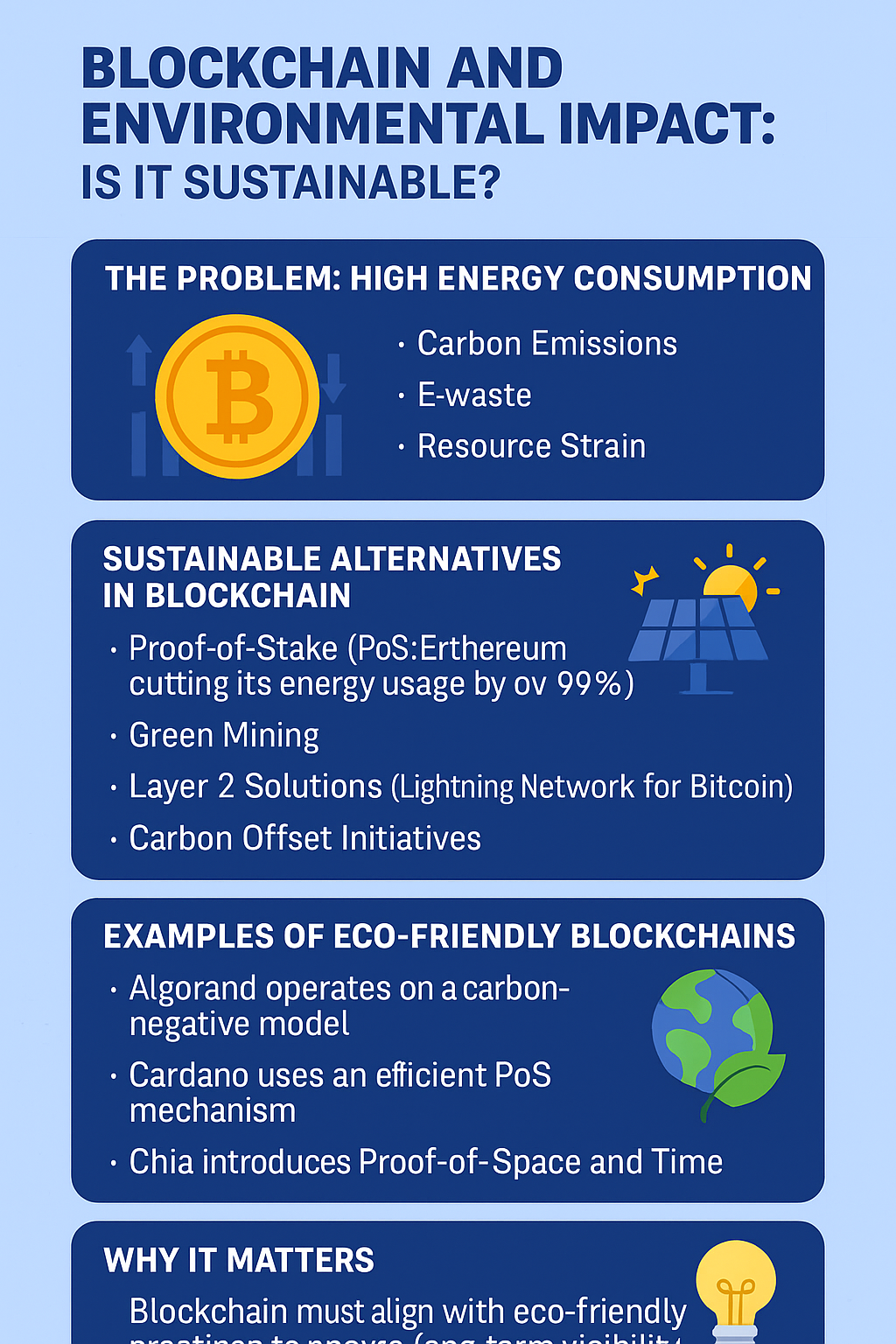Blockchain and Environmental Impact: Is It Sustainable?
Flutter Bees
Play to relieve stress: tap in the clicker game or defend your hive. Watch to earn points and complete tasks!
Play Flutter Bees Now
Blockchain technology has revolutionized various industries, offering transparency, decentralization, and security. However, as its adoption grows, so do concerns about its environmental impact. This blog explores whether blockchain is environmentally sustainable and what steps are being taken to minimize its ecological footprint.
The Problem: High Energy Consumption
The biggest criticism of blockchain—especially Bitcoin—is its immense energy usage. Traditional Proof-of-Work (PoW) systems require miners to solve complex mathematical problems, consuming large amounts of electricity. Bitcoin mining, for example, consumes more power annually than some small countries.
Key Concerns:
- Carbon Emissions: Mining activities powered by fossil fuels contribute to greenhouse gas emissions.
- E-waste: Constant hardware upgrades for mining rigs lead to significant electronic waste.
- Resource Strain: High demand for energy strains local power grids in mining-heavy regions.
Sustainable Alternatives in Blockchain
Despite its energy-intensive origins, blockchain is evolving. Newer technologies are being developed to reduce its environmental burden:
- Proof-of-Stake (PoS): Unlike PoW, PoS doesn’t require extensive computation. Ethereum, the second-largest blockchain, transitioned to PoS in 2022—cutting its energy usage by over 99%.
- Green Mining: Some mining companies use renewable energy (solar, wind, hydro) to power operations.
- Layer 2 Solutions: These protocols (e.g., Lightning Network for Bitcoin) reduce the energy per transaction by processing off-chain.
- Carbon Offset Initiatives: Some blockchain platforms are purchasing carbon credits to neutralize their impact.
Examples of Eco-Friendly Blockchains
- Algorand: Operates on a carbon-negative model.
- Cardano: Uses an efficient PoS mechanism.
- Chia: Introduces Proof-of-Space and Time, reducing energy dependency.
Why It Matters
As the world focuses on sustainable development, blockchain must align with eco-friendly practices to remain viable in the long term. Governments, developers, and users are increasingly demanding greener alternatives, which will drive innovation in this space.
Conclusion
Blockchain’s environmental impact is real but not irreversible. Through innovation, policy, and conscious use of resources, blockchain can become a sustainable technology. As with any tool, its effect on the planet depends on how we choose to use it.
Flutter Bees
Relieve stress and have fun—play the bee defense game or earn points by tapping and watching videos.
Play Flutter Bees Now






Post Comment